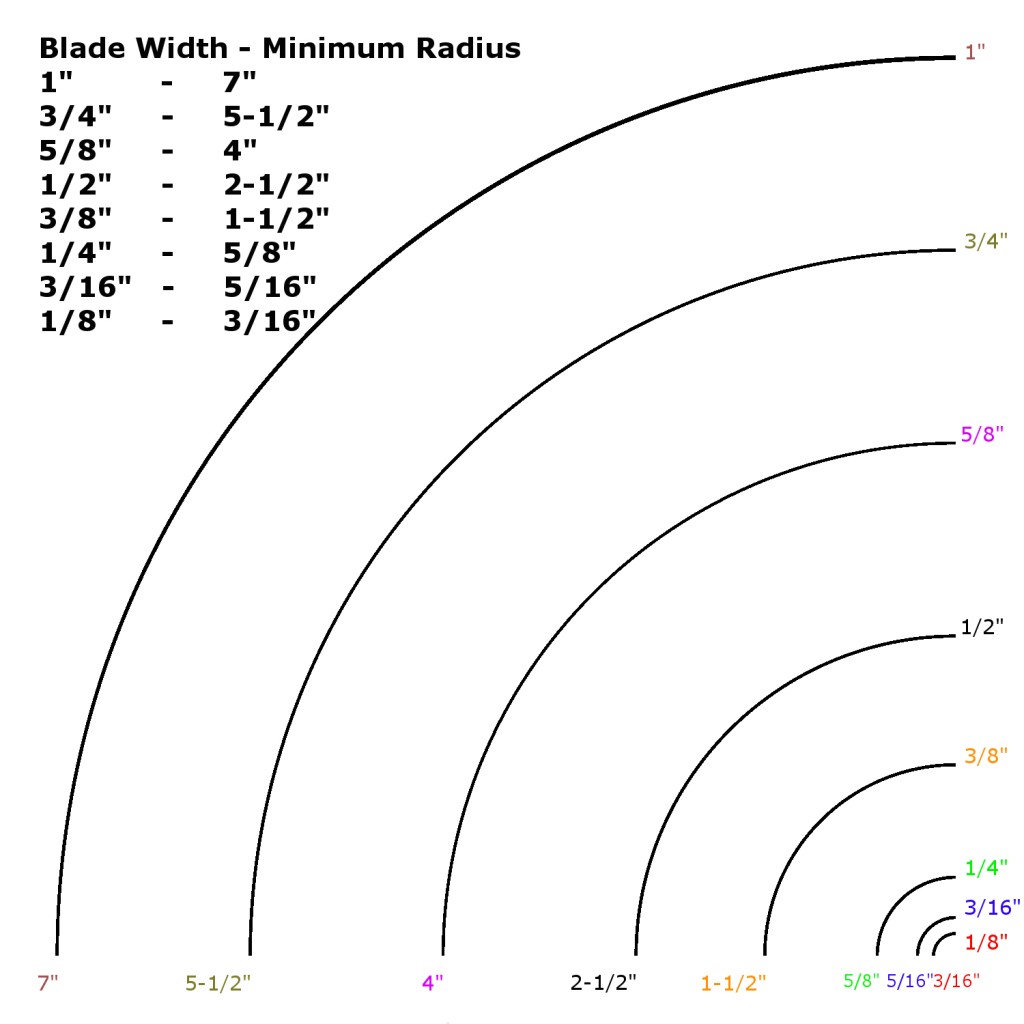transatlantic
Boom!
I have some curves I need to cut that have about a 1" radius. I had a look at the following guide and so ordered some 3/8" blades from tuffsaw :
3/8" - SuperTuff Carbon 6 TPI
3/8" - SuperTuff Carbon 10 TPI
1/4" - SuperTuff Carbon 6 TPI
I setup the 3/8" 6 TPI blade and am having trouble even making the 1.5" radius. When I make the turn, I can see the blade being fairly twisted, and I hear rubbing of some sort coming from the the upper wheel casing (BS300).
I then tried the 1/4 inch and that appears to work fine for 1.5", but it kinda does the same thing for the 5/8" radius.
It just feels like that the radius according to that guide is far too tight for the blade they recommened? Should I be able to see the blade visibly twist between the upper and lower guide? .. and of course the rubbing sound in the upper wheel compartment can't be right?

3/8" - SuperTuff Carbon 6 TPI
3/8" - SuperTuff Carbon 10 TPI
1/4" - SuperTuff Carbon 6 TPI
I setup the 3/8" 6 TPI blade and am having trouble even making the 1.5" radius. When I make the turn, I can see the blade being fairly twisted, and I hear rubbing of some sort coming from the the upper wheel casing (BS300).
I then tried the 1/4 inch and that appears to work fine for 1.5", but it kinda does the same thing for the 5/8" radius.
It just feels like that the radius according to that guide is far too tight for the blade they recommened? Should I be able to see the blade visibly twist between the upper and lower guide? .. and of course the rubbing sound in the upper wheel compartment can't be right?

































